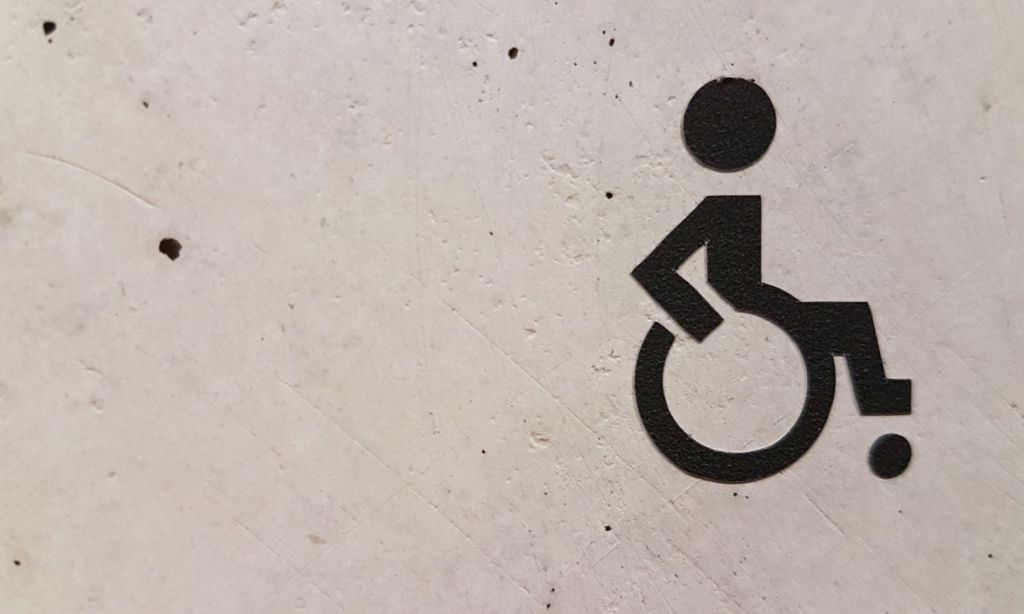Tourism Australia recently found that almost one quarter (23%) of travellers worldwide have accessibility needs. But despite this, many people who don’t have accessibility needs themselves or don’t know anyone who does, don’t give the difficulties disabled people might face when travelling a second thought.
“I think five to 10 years ago, absolutely no one gave a damn about whether the world was accessible for disabled people to travel,” says Hannah Diviney, disability advocate and author of I’ll Let Myself In. “Now, I think slightly more people do, but we still have a long way to go. I’ve seen the slow arrival of accessible travel accommodations being included on websites and in publicly available information, but you still have to dig for it and clarify everything about five times and even then, it’s not a guarantee.”
Diviney lives with cerebral palsy, which affects her fine and gross motor skills. She struggles to use cutlery properly and handwrite neatly and navigates the world in a wheelchair. She says, in some rare cases, she’s seen accessibility specific holiday resorts, accommodation or tours being created. It’s indicative of a long overdue shift in people realising that disabled people have ambitions and desires to travel just like everyone else, she says.
Accessible tourism, as defined by Tourism Australia, is the ongoing effort to ensure tourist destinations, products and services are accessible to all people. The Queensland government declared 2023 the Year of Accessible Tourism, putting $12 million towards initiatives to help the state’s tourism businesses better cater to visitors of all abilities and to promote those accessible destinations and experiences. One initiative is a podcast about inclusive travel called Accessed That.
One podcast guest has been disability advocate Dr Beth O’Brien who has a PhD in Social Psychology. She lives with a rare form of dwarfism called diastrophic dysplasia, which has resulted in her using a wheelchair full-time and due to her short arms and legs, often has difficulty reaching for things.
“When I first started going to London, more than 10 years ago, there was only one tube line that was accessible, meaning you were really limited in where you could go,” says O’Brien. “My last time in New York in 2016, though, I rarely encountered public attractions that weren’t accessible. This meant I was able to visit all the galleries, shops, parks and attractions I wanted to. I’m a big foodie and was pleasantly surprised we were able to get into almost any restaurant.”
It was Japan, O’Brien says, where she experienced the best public transport accessibility. On a trip in 2019, she says she couldn’t believe how organised and respectful the experience was travelling on the Shinkansen with a wheelchair. When she’d arrive at the station, staff would be ready to take us to the platform, guiding her from the front and asking people to move aside so she had a clear path.
“Our private guide [included in the accessible travel ticket price] would then stand at the right stop on the platform, poised with the ramp so that when the train arrive, they could get me on the train with no fuss,” she says.
“My ticket gave me a spot for my wheelchair as well as an actual cabin seat, meaning I could transfer into the seat on a long journey if I wanted to rest. That said, finding wheelchair accessible accommodation in Japan was extremely difficult.”
Writer Zoe Simmons, who lives with multiple mental and physical disabilities, including nerve disorder fibromyalgia, bipolar and autism, says she’s seeing more disabled voices being represented in media and journalism, which is resulting in more awareness of the issues and an improvement in facilities and offerings. We have a long way to go, she says. Nearly single time she leaves the house, she experiences an accessibility barrier.
“It’s exhausting and disappointing,” says Simmons. “While some places are genuinely working on doing things better, a lot of places just aren’t. We need non-disabled allies to call out accessibility issues, encourage locations to put their accessibility information online and hire disabled accessibility consultants to make things better.”
Many people just don’t care about accessibility, she says. It’s upsetting, considering often, accessibility can be drastically improved with just a few small tweaks. Without those, Simmons and others with disabilities are often left out.
“It’s really disheartening because I love to travel,” she says. “I want to travel all across Australia and overseas and experience the world. But it’s just sad knowing I will always have these barriers. It would be nice if I didn’t have to fight quite so hard. But I will fit because the next generation deserves better, and I’m doing everything I can now to create this change.”
O’Brien says she thinks one of the biggest challenges with accessible tourism is the simple lack of drive to make things more accessible – though, she’s working on combatting this with her disability consulting business, Consultable. Diviney says some operators might also be daunted by the level of work accessibility might take.
“They’re scared of getting it wrong or of paying exorbitant amounts of money that might give them little return in a business sense,” says Diviney.
“But accessibility helps everyone. The elderly, the pregnant, children. It makes people’s lives easier, which is going to give them a stronger sense of relaxation and make them view you and your location with more positivity. It will also make it more likely for word of mouth to spread if people know that anyone can be comfortable there.”
Related: The Way We Travel Is Changing, and That’s a Good Thing
Related: One of the Most Talked-About Trends in Wellness Travel? Silent Retreats
Read more stories from The Latch and subscribe to our email newsletter.







